personal website of ryan r. curtin

In the summer of 2006, two roommates living in a shack north of campus decorated mostly with styrofoam cups (Figures 1 and 2) sat down and made a basic plan for the l.o.u.n.g.e., to be implemented the coming fall upon moving back onto campus.
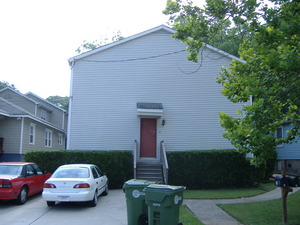
Figure 1. This wonderful home had no windows on its front. |
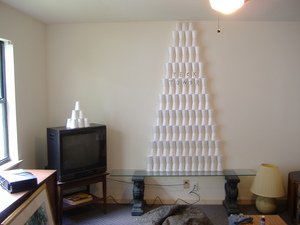
Figure 2. A faithfully accurate rendition of Tech Tower. |
During this planning session it was decided that the l.o.u.n.g.e. must have several important features:
With these goals in mind, the soon-to-be residents of the l.o.u.n.g.e. set about obtaining the correct materials, and, in the fall, engineered the l.o.u.n.g.e. to meet these technical specifications.
II. Original Establishment of the l.o.u.n.g.e.Upon moving into the room that would soon become the l.o.u.n.g.e., a large amount of work had to be done. First, the written plans had to be reconciled with reality; none of the approximations used in determining how things would fit were accurate and had to be mostly abandoned. The first technical specification was easily achieved, by merely stacking the computers that had been obtained over the previous year through various methods [1, 2], to conserve space. An early implementation of this idea can be seen in Figure 3. The second specification was completed after much (arguably unnecessary) research on fluorescent lights by purchasing two F40T12 blacklights from Home Depot and merely switching them out with the fluorescent bulbs provided with the room (see Figure 4). There was originally some concern over the effects of blacklight on skin and eyes; several studies reported no risk of cancer, death, or spontaneous combustion. The third specification (quadruple-bunked beds) was completed easily by abusing and exploiting the two-level bunking capabilities of the bedframes, and placing a mattress frame on every possible level. This can be seen in Figure 5.
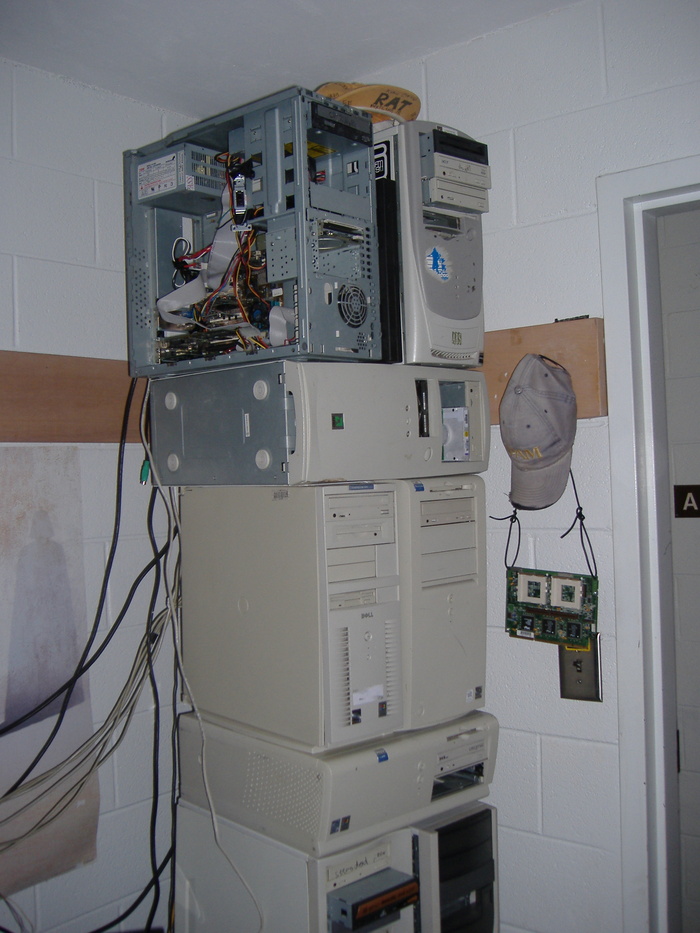
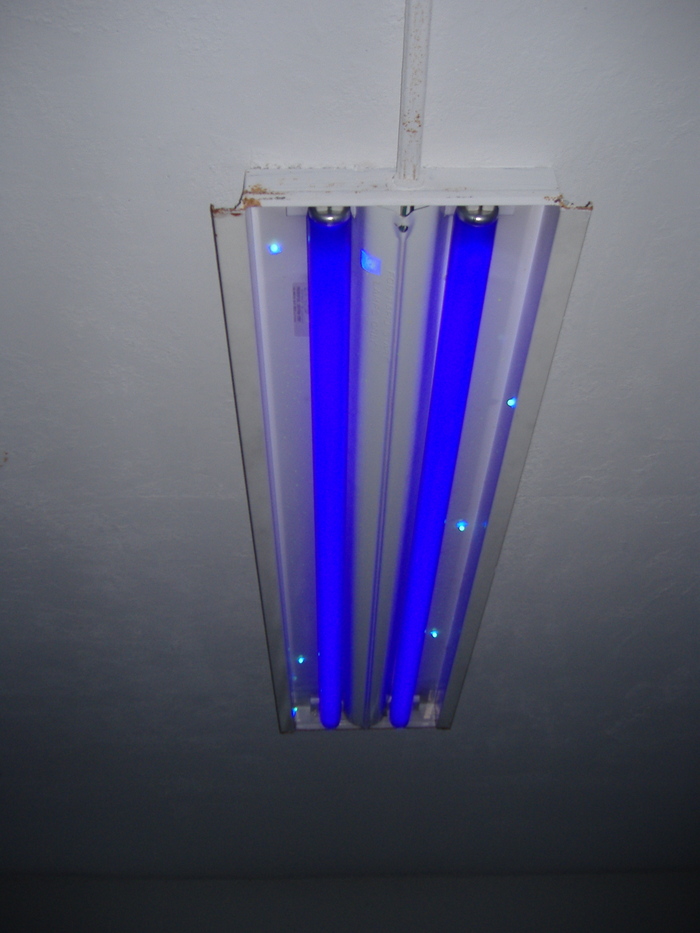
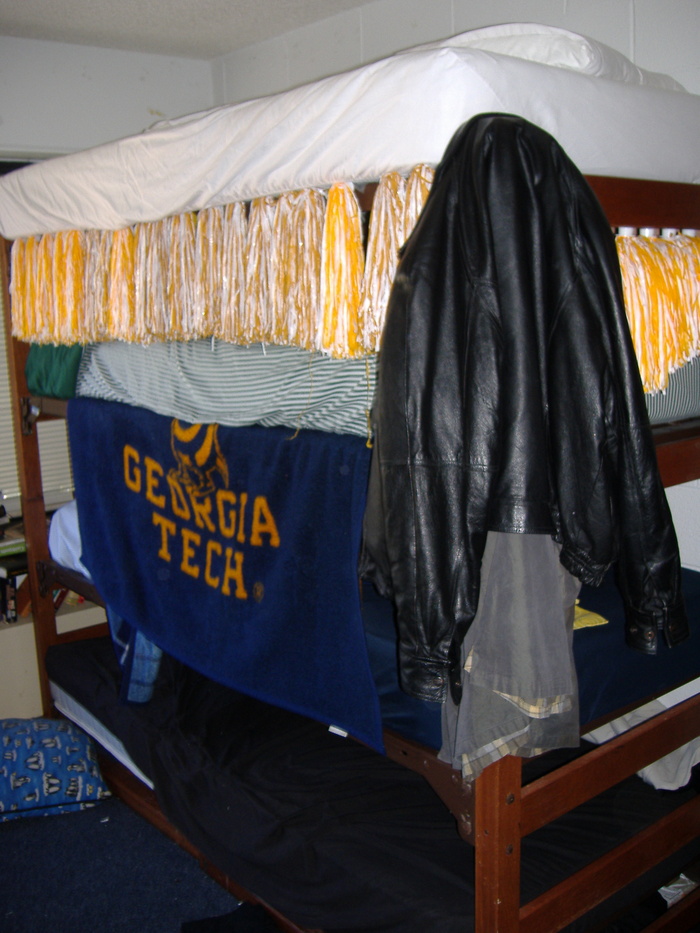
While all of the design goals of the l.o.u.n.g.e. were accomplished, there were several problems and annoyances that had to be solved. First, the blacklight effect is nearly ruined if any normal lights are turned on in the close proximity. Therefore, desk lamps and lights from the nearby bathroom could detract from or altogether ruin the l.o.u.n.g.e. experience. While some residents adapted entirely to the blacklight, going so far as to avoid using their desk lamp at any time, turn down the brightness on their monitors as far as possible, and buying extra-dark sunglasses for outside wear as a result of acclimating to the dark environment of the l.o.u.n.g.e., some residents did not do this and continued to use their desk lamps all year long. This problem was never solved.
Another problem of the l.o.u.n.g.e. and its dark environment was that it was very easy to lose small items such as food, electronics, coins, fish, and anything that did not glow under blacklight. The majority of the l.o.u.n.g.e. residents were electrical and computer engineers; as a result, small electrical components such as resistors and capacitors were in abundance. These small, sharp metal devices would disappear into the carpet, invisible to the naked eye. Most of these were found via puncture wounds in bare feet. Rusty nails, old capacitors, upside-down TTL chips, and anything small and sharp were also candidates for items found in bare feet. This problem was solved with the advent of shoes.
The quadruple-bunked bed originally presented both an engineering problem and a sleeping problem. It was decided upon because of how little space it used; however, each piece of the bed had to be meticulously assembled to allow enough space for four people to sleep on the frame. Two of the four end-pieces making up the main frame of the bed had to be turned upside-down to allow four beds to fit. Overall, most of the components were used in ways never intended by their designers. Once the bed was assembled, it was discovered that it was tough to manuever in and out of the beds, as well as while in the beds. However, these problems were resolved fairly quickly as each resident developed their own unique method for bed entry, sometimes with outside help [3].
IV. Picture Gallery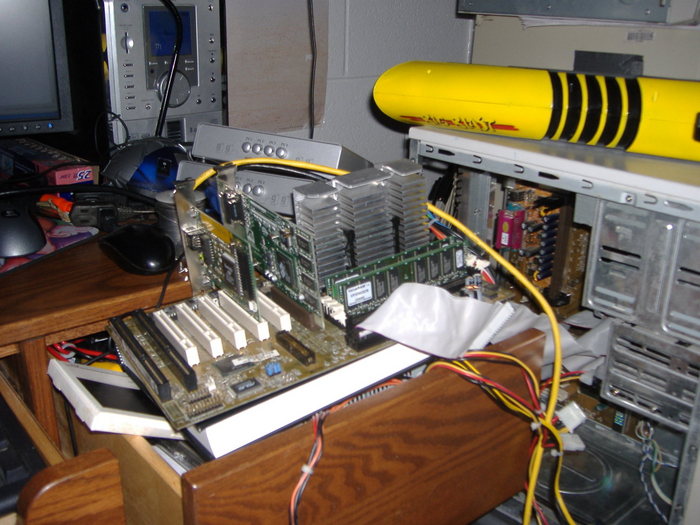
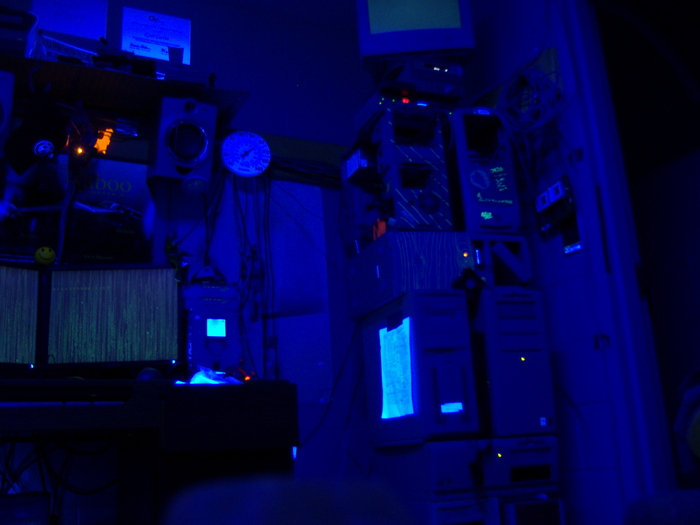
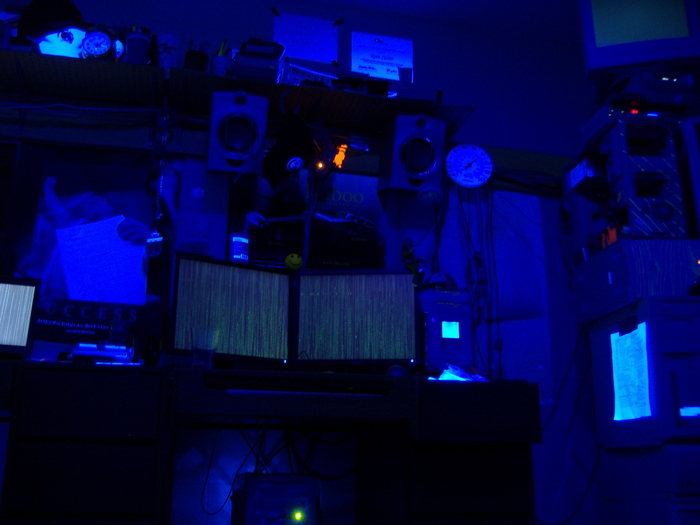
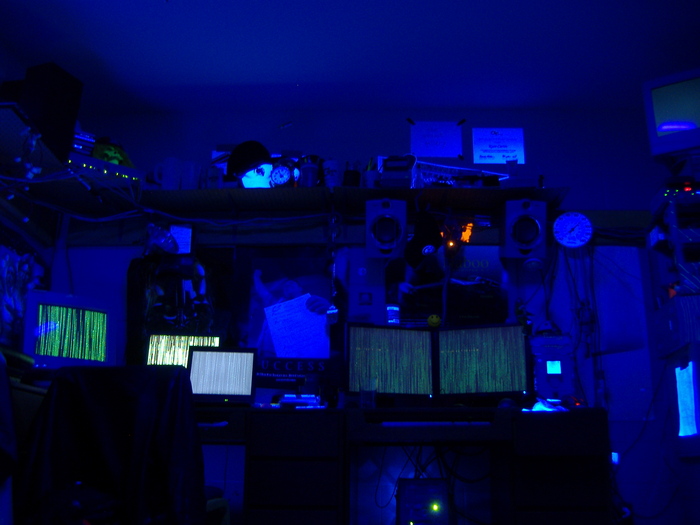
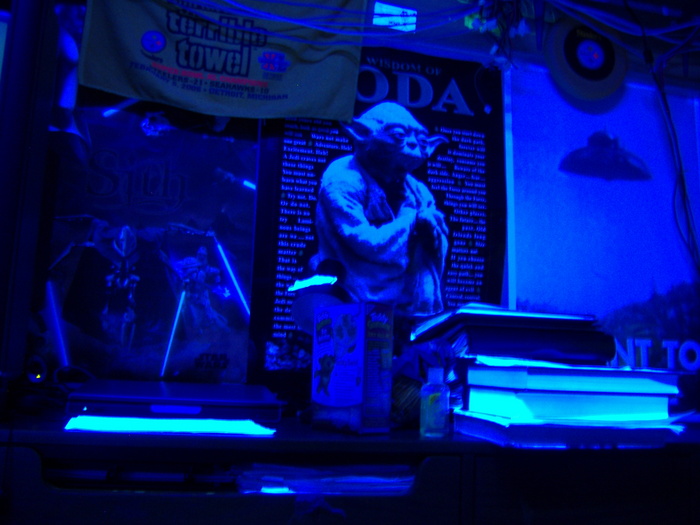
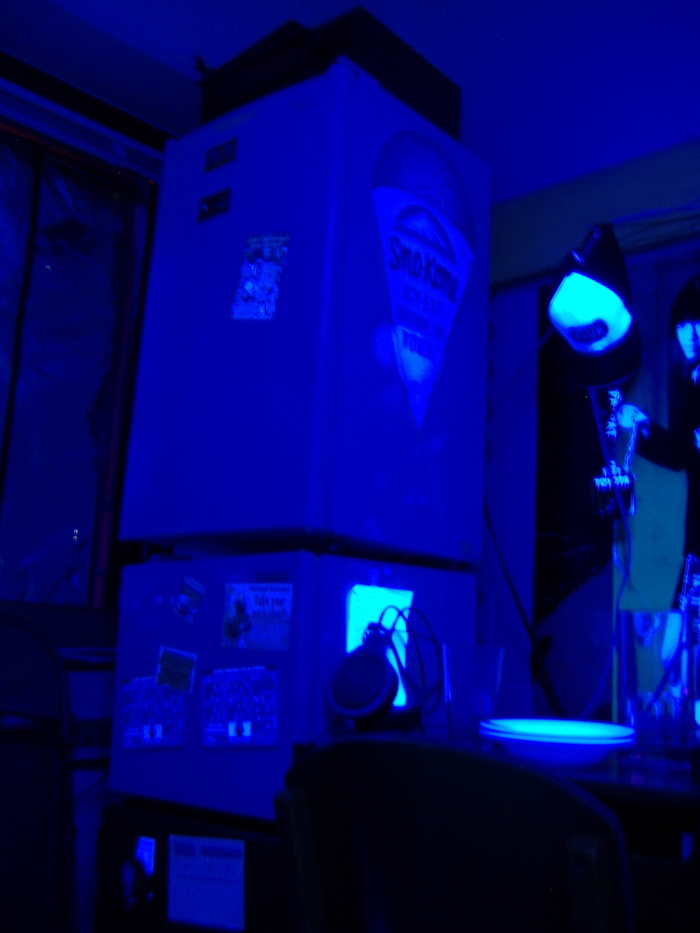
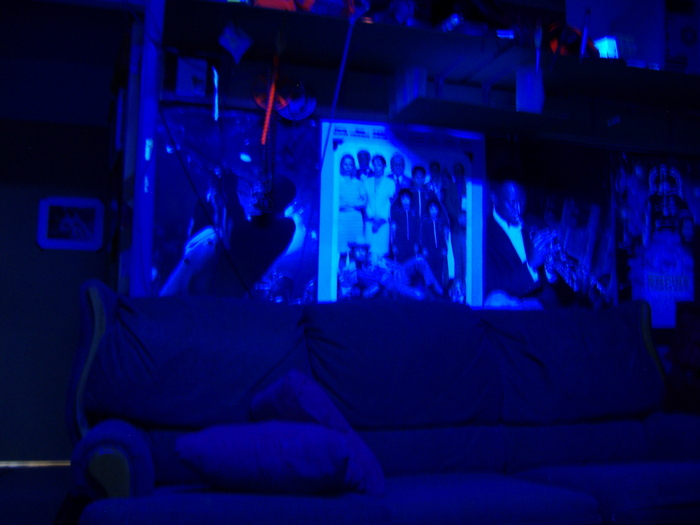
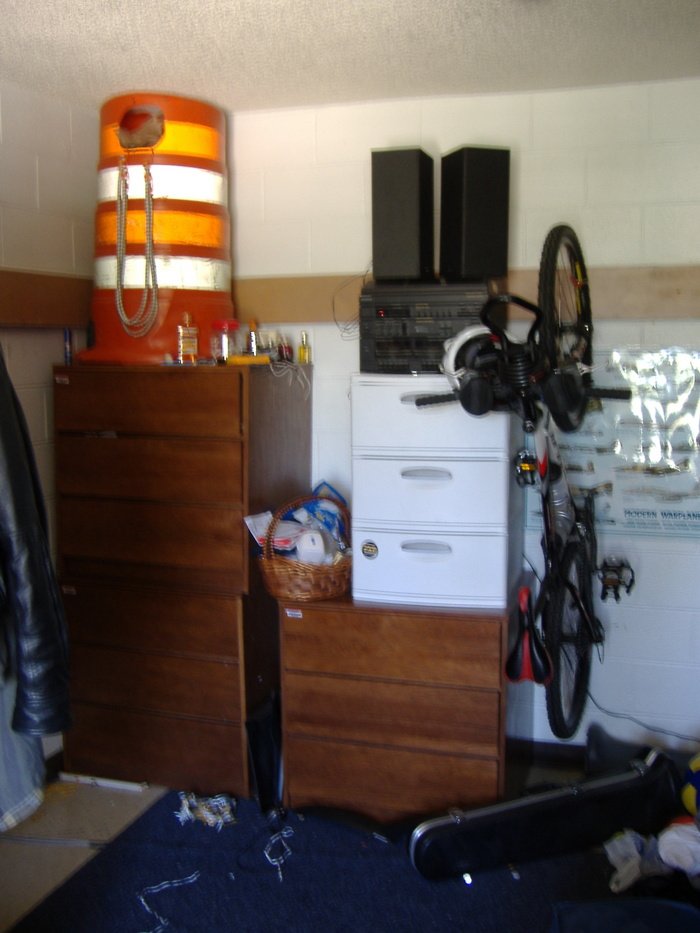
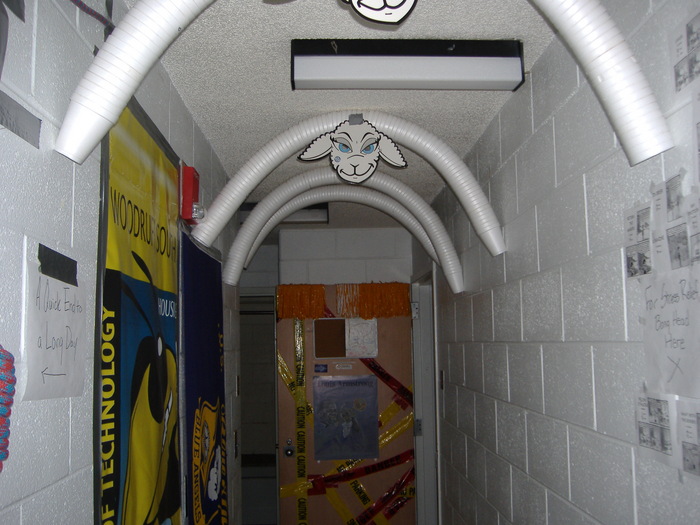
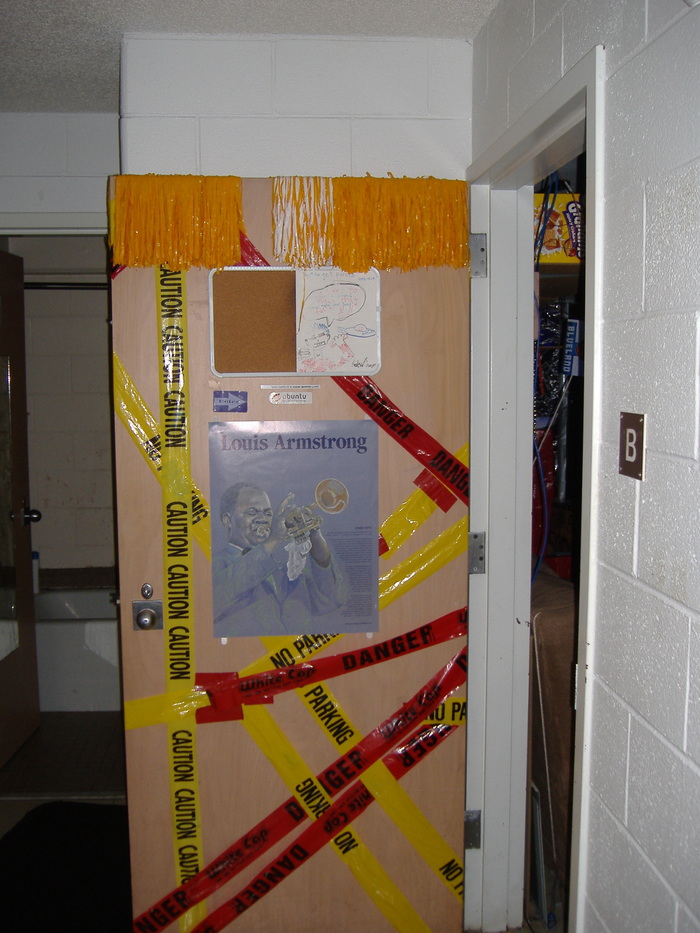
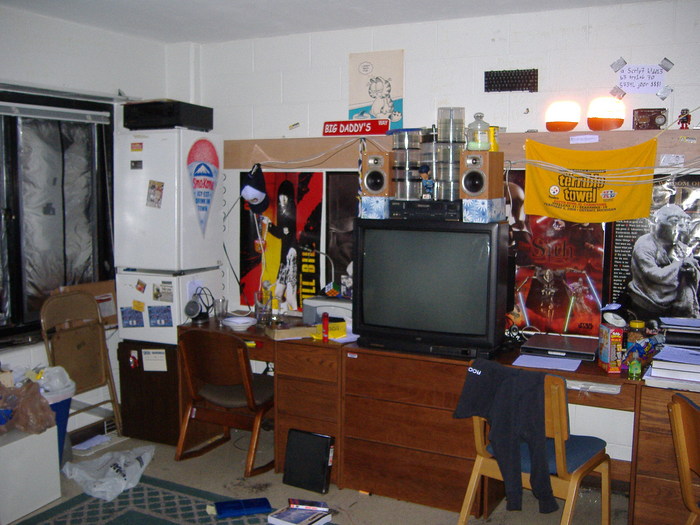
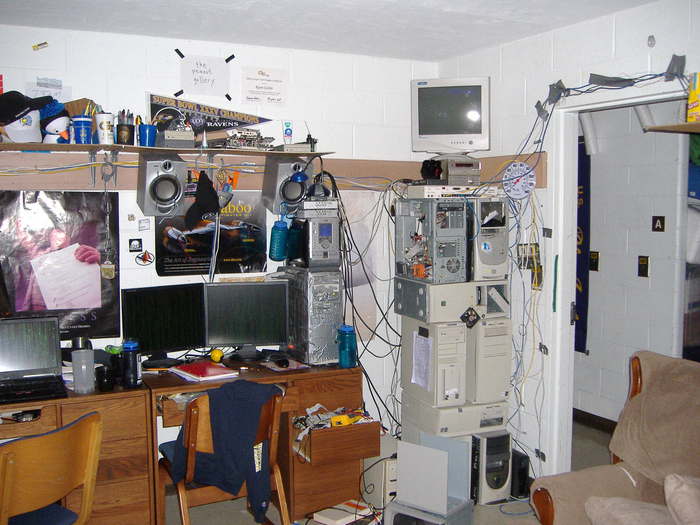
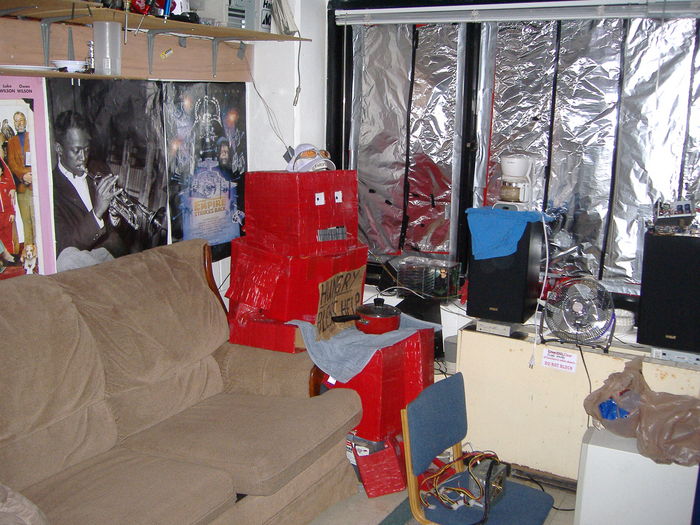
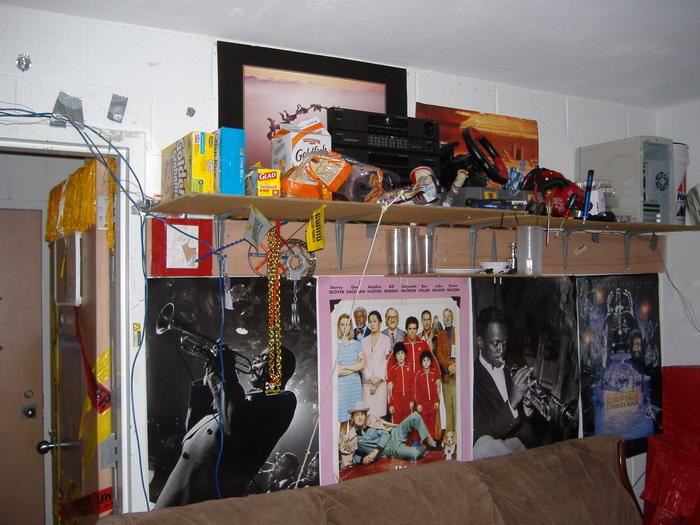
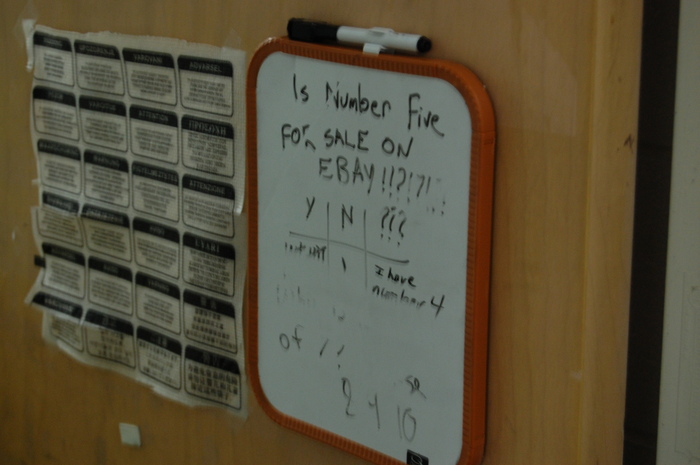
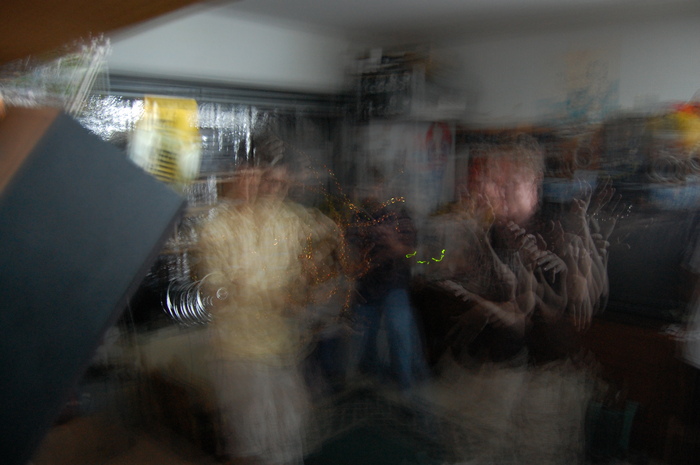
After one full year of living in the l.o.u.n.g.e., Georgia Tech Housing forced the l.o.u.n.g.e. to relocate to a new room [4]. During the move-out process, several important conclusions were made, many influencing the next year's l.o.u.n.g.e. setup: